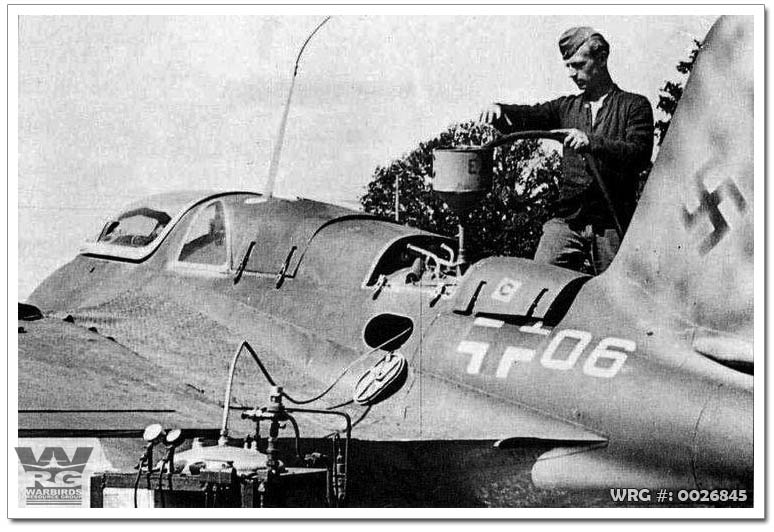Messerschmitt Me 163
Design & Development
Work on the design started under the aegis of the Deutsche Forschungsanstalt für Segelflug (DFS)—the German Institute for the Study of sailplane flight. Their first design was a conversion of the earlier Lippisch Delta IV known as the DFS 39 and used purely as a glider testbed of the airframe. A larger follow-on version with a small propeller engine started as the DFS 194. This version used wingtip-mounted rudders, which Lippisch felt would cause problems at high speed. Lippisch changed the system of vertical stabilization for the DFS 194's airframe from the earlier DFS 39's wingtip rudders, to a conventional vertical stabilizer at the rear of the aircraft. The design included a number of features from its origins as a glider, notably a skid used for landings, which could be retracted into the aircraft's keel in flight. For takeoff, a pair of wheels, each mounted onto the ends of a specially designed cross-axle, were needed due to the weight of the fuel, but the wheels, forming a takeoff "dolly" under the landing skid, were released shortly after takeoff. The designers planned to use the forthcoming Walter R-1-203 cold engine of 400 kg (880 lb) thrust, which used a monopropellant consisting of stabilized HTP known by the name T-Stoff. Heinkel had also been working with Hellmuth Walter on his rocket engines, mounting them in the He 112's tail for testing, and later in the first purpose-designed, liquid-fueled rocket aircraft, the He 176. Heinkel had also been selected to produce the fuselage for the DFS 194 when it entered production, as it was felt that the highly volatile monopropellant "fuel's" reactivity with organic matter would be too dangerous in a wooden fuselage structure. Work continued under the code name Projekt X.
Messerschmitt Me 163 getting fueled.
[Source: Unknown]
Sources:
Gunston, Bill & Wood, Tony - Hitler's Luftwaffe , 1977, Salamander
Books Ltd., London
, 1977, Salamander
Books Ltd., London
Wikipedia - Me 163
Gunston, Bill & Wood, Tony - Hitler's Luftwaffe
Wikipedia - Me 163






